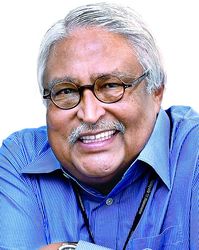
MAHATMA GANDHI WAS a constant presence in my family. Every letter that arrived at our home carried the name of the town where the Mahatma had built his last ashram. Mount Wardha was where I grew up. It is a short drive from the headquarters of the Malayala Manorama in Kottayam, Kerala. My parents chose this hillock to build their nest, Roop Kala. It helped that our cousins lived close by. As a kid, I often wondered why the elders named it Wardha. Maybe they saw Wardha as the last comma in the Mahatma’s life story, I thought. Just before the full stop at Birla House on January 30, 1948. When I grew up, I found that there was a more pedestrian explanation. More about that later.
There is no full stop to the Gandhi story, is there? We are still discussing it, and, hence, this week’s cover. Another prominent assassination, too, is refusing to stay in the ground. President John F. Kennedy Assassination Records Collection Act of 1992 stated that by October 26, 2017, the US National Archives would release the files of the investigation into his death. President Donald Trump had the power to stop the release of the files, but he did not.
Trump’s clearing the release is in keeping with Section 2.2 of the act: “All government records concerning the assassination of President John F. Kennedy should carry a presumption of immediate disclosure, and all records should be eventually disclosed to enable the public to become fully informed about the history surrounding the assassination.”
For a journalist, that last line is most important: the right of the public to be fully informed about the history of their country. In 1992, the US Congress felt that 30-year-old secrets were inconsequential enough to be put online. But, even 70 years later, an Indian who wants to read the Gandhi files must go to the research room of the National Archives of India (NAI) and register to access the 67 digitised documents, spread over 11,186 pages. And, surely, the intelligence reports might not be there. How many governments balked at releasing the Netaji files! The Narendra Modi government released most of them, but the intelligence files are still under wraps, I understand.
Now, why must anybody read these files, you could ask. Fair enough. The agencies holding these files are competent enough to investigate, and what more can anybody find in them? Interestingly, quite a bit can be found by a diligent researcher. After Odisha-based researcher Hemanta Panda said that he could not find the final charge sheet of the Gandhi murder case and the order for the execution of
Nathuram Godse in the NAI, the Central Information Commissioner admitted that the archives did not have all Gandhi files. The CIC then issued a detailed order directing the Delhi Police to transfer all original records to the archives, in an attempt to consolidate records of the case. So, should more people read these files or not?
Now, about Mount Wardha. Long before our extended family bought the hillock, it was the haunt of leprosy patients, vagabonds and the like. So, it got the name varathakunnu (mount of outsiders). The family that bought it later picked a popular place name of those times, one that sounded like ‘varatha’. Hence, Mount Wardha!





